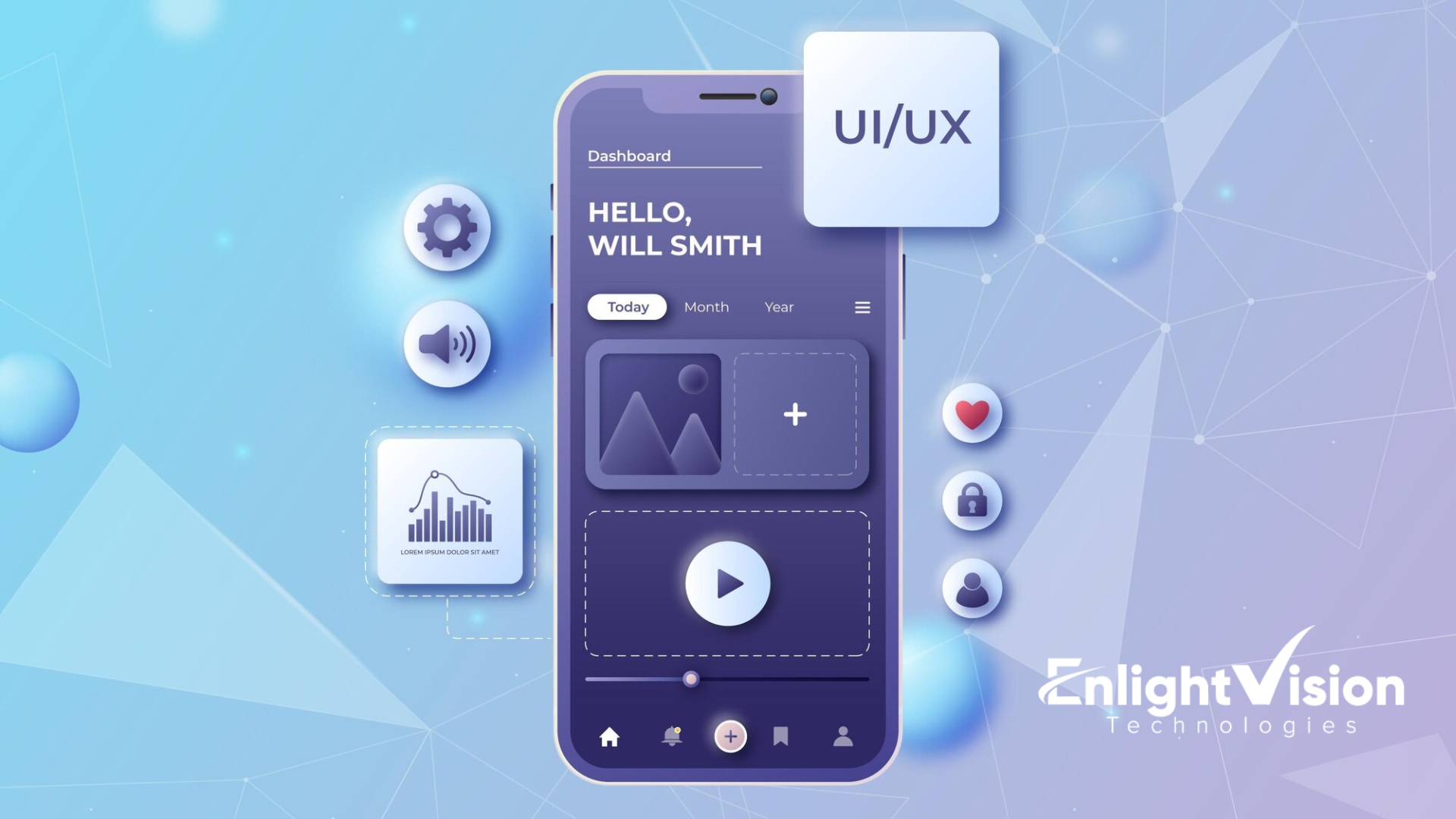The Complete App Development Roadmap: From Idea to Launch
Introduction:
The Journey to Building a Successful App
Developing a web or mobile application is an exciting but difficult task. A well-organized app development roadmap is essential for success, regardless of whether you’re an established company trying to improve consumer engagement or a startup hoping to upend the market. From conceptualizing the idea to launching and scaling, each phase requires careful planning, execution, and iteration.
At EnlightVision Technologies, we specialize in end-to-end app development, leveraging the latest technologies to deliver robust, scalable, and user-friendly applications. In this guide, we’ll walk you through the complete app development lifecycle to ensure your vision becomes a reality.
1. Understanding Your App’s Purpose and Market
Before writing a single line of code, you must define the purpose and value of your app. This foundational step helps in aligning your app with user needs and market demands.
Key Questions to Ask:
- What problem does your app solve?
- Who is your target audience?
- What unique value does your app offer?
- What are your competitors doing, and how can you differentiate?
Market Research & Competitive Analysis
Conducting market research is essential to understand trends, customer preferences, and gaps in existing solutions. Utilize tools like Google Trends, App Annie, and Sensor Tower to analyze app market trends and performance.
💡 Example: A healthcare startup planning to develop a telemedicine app should analyze top competitors like Teladoc and MDLIVE, studying their features, pricing models, and user reviews to identify opportunities for improvement.
2. Planning and Ideation: Mapping the User Journey
Once the app concept is validated, the next step is structuring the development process. This involves creating user stories, wireframing, and defining technical requirements.
Steps in the Planning Phase:
- User Stories: Define how users will interact with the app.
- Wireframing & Prototyping: Use tools like Figma or Adobe XD to create a blueprint of the app.
- Feature Prioritization: Categorize features into Must-Have, Should-Have, and Nice-to-Have.
- Technology Stack Selection: Choose programming languages, frameworks, and databases based on project needs.
💡 Example: An e-commerce app requires features like product search, shopping cart, payment gateway, and order tracking. Prioritizing these ensures a seamless shopping experience.
3. UI/UX Design: Crafting an Engaging User Experience
User experience (UX) and user interface (UI) design play a crucial role in app adoption. A poorly designed app leads to high churn rates, while an intuitive design enhances engagement.
Key Aspects of UI/UX Design:
- Mobile-First Approach: Optimize for smartphones first, then scale to tablets and desktops.
- Consistent Branding: Use colors, typography, and elements aligned with your brand.
- Accessibility: Ensure inclusivity with features like voice navigation and contrast adjustments.
- Prototyping & User Testing: Conduct A/B testing to refine the interface before development.
💡 Example: Instagram’s minimalist design with intuitive navigation keeps users engaged while prioritizing visual content.
4. Development: Bringing Your App to Life
This is where coding begins. A robust development process ensures scalability, security, and high performance.
Development Approaches:
- Native Development: Platform-specific apps using Swift (iOS) and Kotlin (Android).
- Cross-Platform Development: Single codebase using React Native or Flutter.
- Progressive Web Apps (PWA): Browser-based apps that mimic native experiences.
Backend Development:
- Database Management: SQL (PostgreSQL, MySQL) or NoSQL (MongoDB, Firebase)
- API Development: RESTful or GraphQL APIs for seamless data exchange.
- Cloud Hosting: AWS, Google Cloud, or Azure for scalable infrastructure.
💡 Example: WhatsApp’s backend uses Erlang for real-time messaging, ensuring fast and reliable communication.
5. Testing: Ensuring App Quality
Comprehensive testing helps detect bugs and optimize performance before launch.
Types of Testing:
- Functional Testing: Ensures features work as expected.
- Performance Testing: Checks speed and responsiveness.
- Security Testing: Identifies vulnerabilities to protect user data.
- Beta Testing: Involves real users providing feedback before full launch.
💡 Example: Tesla’s app undergoes extensive performance testing to ensure seamless control of vehicles via smartphones.
6. Launch: Deploying with Confidence
Launching an app is more than just uploading it to an app store—it requires strategic execution.
Pre-Launch Checklist:
- App Store Optimization (ASO): Optimize keywords, descriptions, and visuals.
- Marketing Campaigns: Leverage social media, PR, and paid ads.
- Bug Monitoring: Use crash analytics tools like Firebase to track issues.
💡 Example: TikTok’s viral marketing strategy combined with influencer collaborations led to explosive growth.
7. Post-Launch: Maintenance and Scaling
After launch, continuous improvements keep users engaged and ensure long-term success.
Post-Launch Activities:
- User Analytics: Track engagement and retention metrics.
- Regular Updates: Add new features and fix bugs.
- Customer Support: Address user concerns promptly.
- Scaling Strategy: Expand to new markets and integrate advanced features like AI-driven recommendations.
💡 Example: Netflix constantly updates its recommendation algorithm based on user behavior, improving retention rates.
Conclusion: Build Your App with EnlightVision Technologies
Developing a successful app requires expertise, strategic planning, and continuous optimization. At EnlightVision Technologies, we provide end-to-end app development services, from ideation to scaling, ensuring your product stands out in the market.
Ready to turn your idea into a reality?
Contact us today for a free consultation and kickstart your app development journey with EnlightVision Technologies!
Internal Links:
External Links:








